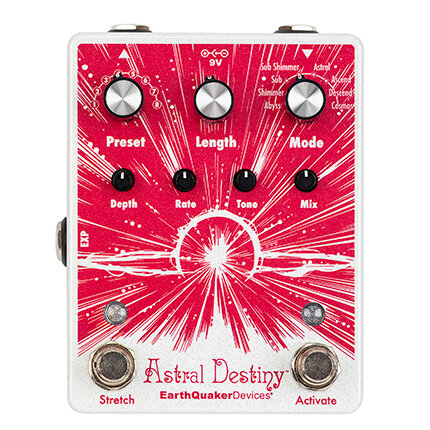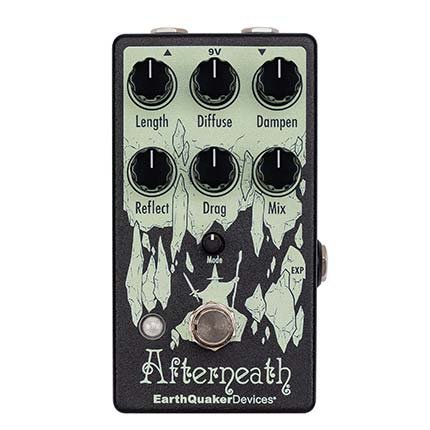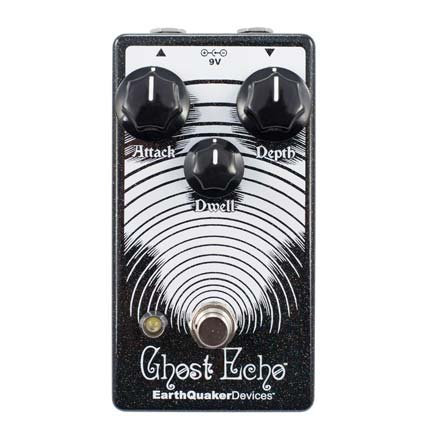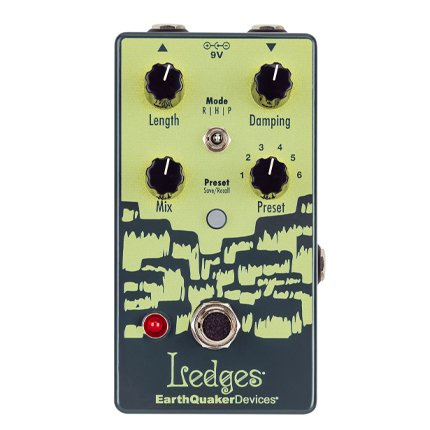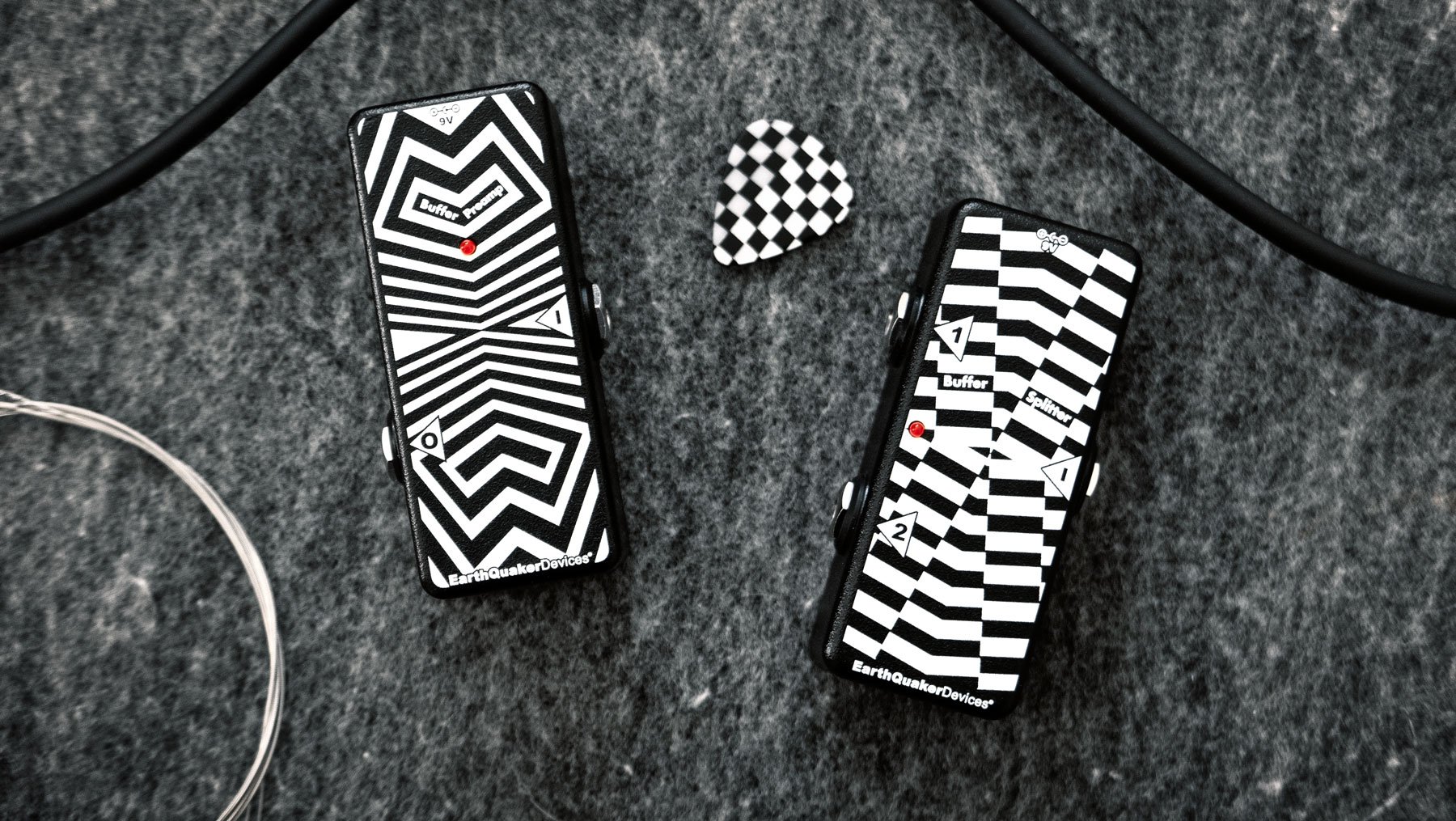Testing For Echoes: An EarthQuaker Reverb Pedal Shootout
Lane Sparber
Choosing a reverb pedal is a daunting task. There are so many different pedals out there covering everything from traditional reverb sounds to genre-bending madness … and beyond. Wherever you fall on that spectrum, EarthQuaker has you covered. My goal today is to help you narrow things down and choose the perfect EarthQuaker reverb pedal for your tastes and needs. (We’re not including the Avalanche Run in this shootout, as it’s a more complex pedal with a higher price point, but for those of you looking for a stereo reverb and delay with tap tempo with subdivision control, reverse delay and 5 different tail lengths, give it a try!)
First, let’s discuss the commonalities. Each of these pedals share the same $199 USD price point. They’re all single-sized compact pedals (with the exception of the Astral Destiny). They all employ EarthQuaker’s “Flexi-Switch” technology for momentary foot-switch operation (again, with the exception of the Astral Destiny, which does its own thing, and we will get to that later). Finally, they all obviously reverberate in one form or another.
Beyond that, the Ghost Echo, Dispatch Master, Afterneath, Astral Destiny and brand new Ledges pedals are far more different than they are alike. That’s the point.
To test these pedals, I played a Strat with Fishman Fluence pickups into the reverb pedal being tested, and then into a fully restored vintage early 80’s Roland JC 120. The JC 120 was set completely dry for maximum clean power and headroom so I could best evaluate exactly what each pedal was doing, as this rig colored the sound as little as possible.
So, without further ado, let’s make some sounds!!!
Ghost Echo
Looking Through The Past, Darkly
The Ghost Echo is based on the old stand-alone reverb units of yesteryear made by Fender and others. That may well have been the starting point, but the Ghost Echo goes WAY beyond what those units could do, and it’s an entity unto itself.
The control set is the most basic of the 5 pedals on our list. First there’s the ATTACK knob, which controls the delay time (30-150 milliseconds), DWELL controls the length of the decay, and the DEPTH knob is your mixer - from completely dry at the most counterclockwise setting to soaking wet at full.
The sonic signature of this pedal is fairly intense. The repeats are extremely distinct and well defined, yet extremely musical. Not for the faint of heart, the Ghost Echo announces its presence loudly and proudly.
On this pedal, the ATTACK knob is the key. At lower settings you can get a rockabilly slap-back sound, but when you turn it up the pedal yields some trippy psychedelic reverb tones. This is where the Ghost Echo shines the brightest. Turn up the ATTACK, play some bluesy bends, and you’re immediately lost in waves upon waves of spooky undulating sound. You really have to watch it though, as this device is totally addictive and you may not want to ever turn it off, no matter what the rest of the band thinks. But, let’s face it; they’re usually dead wrong anyway!
So who is it for? To be sure, the Ghost Echo will satisfy those vintage purists out there. However, the true sonic signature of this pedal becomes most evident when you push the envelope a bit, so don’t be afraid to journey to the dark side!
Dispatch Master
The Well Rounded Vintage Purist
Reverb and delay in one pedal? SURE! Why not? This pedal does both, and it does them incredibly well. That said, we’re here to talk about the reverb, so let’s discuss what the Dispatch Master can do when used primarily as a reverb generator.
To start with, setting up a great reverb sound itself is key, and you can’t really go wrong. Start with the TIME knob all the way down. This completely kills the delay function, and you’re left with just the unadulterated reverb. Now your REVERB knob controls the intensity of the effect. The REPEAT knob is the secret weapon, as turning it up will increase the depth and lushness of the effected tone. MIX will control how much of the effect is applied to your signal.
The Dispatch Master’s unique reverb sound is incredibly smooth and warm. As such, it’s perfect for emulating the reverbs on old tube amps. It doesn’t overwhelm the signal, and will unobtrusively add depth to what’s already there.
Here’s the real secret to the Dispatch Master (SHHHHHH!): as a tech with over 30 years experience, I’ve worked on a ton of vintage amps. I can tell you that all vintage reverb tanks were not created equal. Some were rich, soft sounding and “goopy.” At the other end of the range were those tanks with a distinct percussive pinging sound that echoed with the reverb. Even the same make and model tanks could sound wildly different from each other. Getting back to topic, the beauty of the Dispatch Master is that it can emulate ALL of those old tank sounds. For warm and goopy, set the reverb the way you like it as previously described. Then, if you want to emulate the more edgy vintage tanks, SLOWLY, turn up the TIME knob, and you’ll gradually introduce those echoey pings into your sound.
This pedal, like the Ghost Echo, is rooted in old-school reverb tones. In fact, the Dispatch Master is one of the more Fender-y sounding pedals in the bunch. It’s perfect for vintage reverb purists who want a lush, flexible and intuitive plug-and-play reverb pedal.
Afterneath
The Master Of Ambience
Are you NOT looking for traditional reverb? Do you want … no, NEED … to create your own cutting edge soundscapes? Do you demand iron-fisted control over almost every parameter of your reverb sound? Then STOP right here. You have found your pedal.
This monster boasts six knobs, one of which, “DRAG”, can have multiple functions based on where the “MODE” knob is set. All of these controllable parameters give the Afterneath a staggering amount of versatility. However, experimentation is key. To unlock this device’s true potential, you should expect to put in some real quality time to yield the best results for you.
So what do all of those knobs do? “LENGTH” does just what it says - it controls the length (delay) of the reverberation. At extreme settings, complete aural soundscapes can easily be created through layering. DIFFUSE adjusts how sharp or soft the repeats are. DAMPEN acts like a tone knob that works backward. Turning it down adds treble to the effect. REFLECT is your depth and feedback knob. The MIX knob governs how much of the effect is applied to your dry signal.
The DRAG knob is the heart of the pedal, and it is assignable with the MODE knob. For convenience, the pedal’s indicator LED color changes with each MODE setting. The sound goes from a subtler effect (a slower slew rate) in position 1 to increasingly complex octave and pitch sounds as you cycle through the range. In addition, each different mode affects the tonality of each control. You can also plug in a 50k expression pedal and you’ll have total foot control of the DRAG knob’s sweep.
So as you can imagine, the choices here are endless. I can see two viable approaches to navigating the mighty Afterneath - either you’re after a specific tone in your head (fun), or you want to spend several happy and blissful hours finding the perfect reverb soundscapes for your music (WAAAAY more fun!). This pedal is so inspiring that I can see whole songs being written around it.
So who is the target demographic for this pedal? Well, the Afterneath is NOT a plug-and-play effect, and if you’re a reverb traditionalist, you may want one of the other options. That said, like fortune, the Afterneath favors the bold. It can take you to places that no other pedal on the planet can reach. So if you’re ready and you’re willing to put in the time, you’ll be amply rewarded.
As an aside, the options here are so limitless that EarthQuaker doesn’t even give you suggested settings in the manual as they often do. You are expected to carve your own path, and I can assure you that you’ll have the time of your life doing it.
Astral Destiny
The Spiritualist
Astral Destiny is one of the most unique reverb pedals I’ve ever played through. It’s billed as a sort of octave-reverb-modulation pedal hybrid, and it is, but as usual there’s much more than that simplified description going on here.
Imagine your reverb tone filtered through a collection of the most soulful organ sounds that you’ve ever heard, and you’ll have a great idea of what this pedal does. It’s a totally original take on what a reverb can be.
You get controls for activating custom PRESETS, a LENGTH control (decay time), and a MODE knob (which base reverb sound you want). In addition, there are DEPTH and RATE knobs to control the modulation effect built into each sound, and finally a MIX control, which is your wet/dry blend.
There’s a ton of versatility built in as well. You get control over 8 different modes, and can program and store up to 8 presets. The pedal ships with those 8 memory banks already filled with one preset per mode, but you can overwrite them with your own custom presets if you like. On top of that, you can switch from “Live” mode (which is the stock pedal sound based on the knob settings and mode selected on the panel) to “Preset” mode (wherein the pedal will output whatever preset you have selected via that knob) just by holding down the “Activate” footswitch. That puts a total of 16 different reverb tones right at your feet.
Not enough control for you? How about plugging in an expression pedal? If you do, you can program it to take control of the LENGTH, RATE, TONE, or DEPTH knobs. Best of all, if you’re programming your own preset and using an expression pedal to control any one of those functions, that info is automatically stored WITH the preset!!!
That other footswitch? It’s labeled STRETCH, and when activated it doubles the length of the reverb and changes its pitch for some truly mind-bending fun.
Like the Afterneath, the Astral Destiny isn’t really geared towards reverb purists. That said, with some mode settings you can get close if you turn the RATE and DEPTH knobs all the way down. Although if you do, you’re missing the magic - and point - of this pedal.
For me, the best aspect of the Astral Destiny was the effect (pun most certainly intended) it had on my playing. It made me look at the Strat I had in my hands completely differently, and I was coming up with phrases and riffs that I’d never played before. I was playing to the amazing tones coming through the amp. To say that this pedal is inspiring is an understatement. The Astral Destiny admittedly isn’t for everyone, but, as with the Afterneath, if you put in the time with it you’ll wind up with something as truly special and unique as you are.
Ledges
The Vintage Swiss Army Knife
I saved this pedal for last, as I wanted to see how Ledges stacked up to its EarthQuaker reverb siblings, because after all of the above, do we really need another reverb pedal?? I mean … really???
The answer, I discovered to my delight, was a resounding YES. As far as comparisons go, this box doesn’t really align with anything that the other pedals are doing. It’s its own unique entity.
This is a pedal built on classic vintage reverb tones. In fact, it contains the most authentic, 3D sounding collection of classic tones ever assembled under one EQD roof. ESPECIALLY at this price point.
First, you have three basic modes based on the length of the reverb. From shortest to longest reverbs you have ROOM, HALL, and PLATE modes.
The three other control knobs are LENGTH (decay time), DAMPING (a sort of treble control for the reverb tones themselves), and MIX, which is, as always, the wet/dry blend. These three knobs function in the same fashion for all 3 modes.
What sets this pedal apart is the sheer authenticity of the reverb sounds it reproduces. It’s uncanny. You want slapback? You’ll find it in the ROOM mode. How about cavernous reflections of sound? Go to the HALL setting. Finally, the PLATE setting will yield endless soundscapes at the more extreme LENGTH settings as you continue to play over all of your old echoes. It’s downright hypnotic. In fact, that’s my personal favorite thing about Ledges.
For versatility, the Preset mode comes with 6 pre-programmed tones, but you can create your own sounds and record over them. You can also switch between Preset mode and Live mode on the fly by holding down the stomp switch for a few seconds or simply tapping the PRESET button, which is also the mode indicator light. When it’s lit up green you’re in Live mode, and red means you’re in recording/Preset mode.
There’s also a built-in expression pedal jack, and in typical EQD fashion, any of the three controls can be assigned to it. Fear not. If you’re designing your own preset, whichever knob you have assigned the expression pedal to will be automatically saved and remembered with the preset.
This pedal is utterly compelling, and its ability to cover ANY classic reverb sound with such stellar high fidelity makes it the best choice for any player requiring a killer selection of classic tones at the flick of a switch. Ledges could quickly become one of your “always-on” pedals. As a devotee of vintage reverb myself, this is the pedal that would wind up on my personal board.
By way of closing, I’d like to say that I hope I’ve helped you to effectively compare and contrast the dizzying array of EarthQuaker reverb offerings. They each do their own completely unique thing, and understanding how and why they do what they do is essential to making an effective pedalboard decision.
Happy hunting, tone hounds!!!
Lane Sparber is an amp / guitar / bass / pedal tech who lives and works in Fresh Meadows, Queens, New York. He started repairing gear in his mid-teens, and he’s 46 now, so you do the math. When not causing mayhem in his workshop, he can be found desperately trying to hide his latest orchid purchases from the rest of his family. You can find him on Instagram at @amptech74 or on Facebook at www.facebook.com/lane.sparber. Come say “Hello!”




